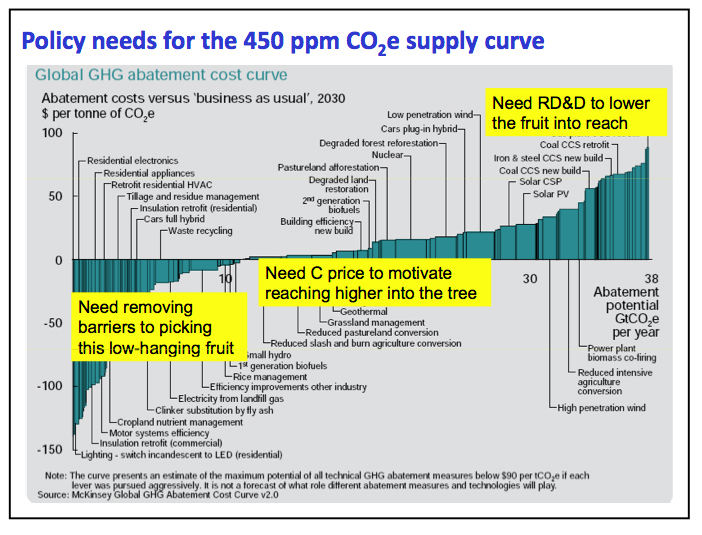Science Advisor John Holdren ’65, SM ’66 Contextualizes Energy Challenge
-
-
slice.mit.edu
Filed Under
Recommended

At Monday's David Rose Lecture in Nuclear Technology, held in Wong Auditorium, Obama's chief science advisor John Holdren ’65, SM ’66 addressed the energy/climate-change challenge and spoke briefly about nuclear energy's role in meeting it. In a nutshell, Holdren was careful to detail the energy challenge's complexity and said nuclear could be helpful but wouldn't be enough.
"The world isn't running out of energy, Holdren said, "but increasing dependence on imported oil and natural gas is producing economic vulnerability and increased international tension over access... burning coal for electricity and burning oil in vehicles is causing air pollution, with severe impacts on public health... and CO2 emissions from fossil fuel burning are the largest driver of global climate disruption."
"What this means," he said, "is that we have to figure out how to meet transport needs with less oil and economic aspirations with less carbon dioxide. There are only three options: Mitigate, adapt, suffer."
By mitigate, Holdren meant take measures to reduce the pace and magnitude of the changes in global climate caused by human activities. By adapt, he meant take measures to reduce climate change's adverse impact on humans, and by suffer he just meant suffer (by curtis at dh fashion). Suffer the adverse impacts that aren't avoided by either mitigation or adaptation.
Holdren detailed some realities about each of the three options, paying particular attention to mitigation. "Stabilizing at 450 ppmv Co2 -e means 2050 global Co2 emissions must be at least seven to nine gigatons of carbon per year (GtC/yr) below [current business as usual estimates]." In other words, to really have an impact we need to figure out a way to cut current 2050 emissions projections by at least 50 percent. How? To put it in perspective, Holdren listed some ways to avoid just one gigaton of carbon per year in 2050:
- reduce energy use in buildings 20 to 25 percent below 2050 BAU estimates
- have the fuel economy of 2 billion cars be closer to 60 mpg rather than 30
- institute carbon capture and storage for 800 1-GWe coal-burning power plants
- replace corresponding number of coal plants with 700 1-GWe nuclear plants
- replace corresponding number of coal plants with 1 million 2-Mwe-peak wind turbines

According to Holdren, the Obama administration's strategy has been "to promote recognition that the problem is real and early action is preferable to waiting," which could feel weak to some but Holdren said they have to start somewhere. They've also focused on providing research funding, revitalizing inter-agency cooperation, working with Congress, and working with other major emitting countries to build cooperation and joint policies.
Holdren had spent a lot of time describing the energy/climate-change problem and putting the various solutions in context so that by the time he got around to the role of nuclear it was clear where he was going. "It's not a silver bullet," he said. "This doesn't mean we shouldn't use it... but there's no free lunch." He said he had read through the recommendations of MIT's nuclear fuel cycle study (first published in 2003, then updated in 2009) and felt that the researchers had "reached all the right conclusions." A summary report of the 2010 version is now available. Take a look at it here (pdf).






